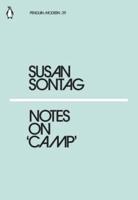Publisher's Synopsis
Excerpt from History of English Poetry, Vol. 2 of 4: From the Twelfth to the Close of the Sixteenth Century, With a Pref, by Richard Price, and Notes Variorum
This fimplicity and freedomcf form, which is charaé'terif'tic Of the earlieft poetry Of all the Teutonic nations, has led narrow minded and fuperficial writers to defcribe anglo-saxon poetry as lines Of bad profe, joined together by alliteration; forgetting that the highefi artifiic excellence is attainable in many ways, and that the metrical laws which fuit one language, are totally out Of place in another Of different f'truéiure. A ltriét and unvarying fyf'tem of verfification, like the Homeric hexameter, in which a battle and a Cooking operation are defcribed in the fame metre, would have feemed intolerable to a Northern poet: he required one which would adapt itfelf to every phafe of emotion and change of aciion, which in defcribing profaic incidents, fuch as will occur in every narrative poem of any length, could be let down nearly to the level of ordi nary profe, with an effeétive tranfition to the more concentrated paffages. The leading, principle in anglo-saxon poetry is to fubor dinate form to matter. NO brilliancy Of language or metre is ac cepted as a fubf'citute for poverty of thought or feeling; purely technical poetry, with a few tri?ing exceptions, is not known. This tendency is clearly brought out by a comparifon of the clofely allied poetry of the Scandinavians, as carried to its highef't point of develop ment in Norway and Iceland. Here the original metrical fyf'cem,6 C/zezmfierz'?ior of dng/o - Sezxon Poetry.
About the Publisher
Forgotten Books publishes hundreds of thousands of rare and classic books. Find more at www.forgottenbooks.com
This book is a reproduction of an important historical work. Forgotten Books uses state-of-the-art technology to digitally reconstruct the work, preserving the original format whilst repairing imperfections present in the aged copy. In rare cases, an imperfection in the original, such as a blemish or missing page, may be replicated in our edition. We do, however, repair the vast majority of imperfections successfully; any imperfections that remain are intentionally left to preserve the state of such historical works.










